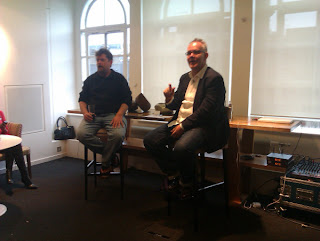The Effects of Social Media on Traditional Journalism
In my role as Director of Communications at Arena Stage, I supervise media relations in addition to marketing and a few other areas. As originally intended, this blog was developed to discuss arts marketing, however from time to time, I stray a little and write about topics that affect media relations, as will be the case today. A couple of weeks ago, I found myself participating in a very interesting discussion via Twitter with Howard Sherman , Peter Marks , Trey Graham , Nella Vera , David Loehr and Kris Vire . This impromptu panel discussion was centered around the affects of social media on traditional practices in arts journalism. With both publicists and journalists recognizing that the traditional media landscape is changing, it made me think about what's next. Below are my thoughts that formed in the weeks since. For a primer on the subject, may I suggest the following articles: " Should Theater Critics be Allowed to Tweet an Opinion Before Writing a Review ?" Wa

